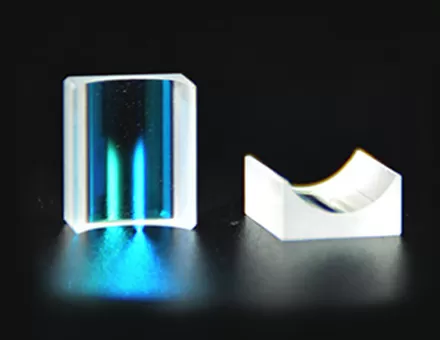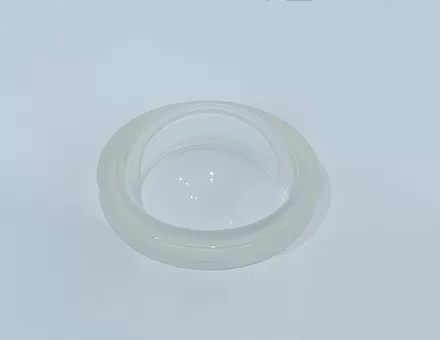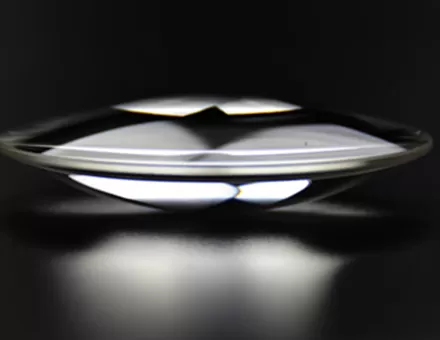Ordinary achromatic lens refers to a lens group that corrects the chromatic aberration of three wavelengths (blue light, green light, and red light).
Because the converging lens focuses blue light closer to the focal point, and the concave lens has a higher dispersion rate for blue light, the positive and negative two-lens chromatic aberration can make the red and blue two colors overlap into one, basically eliminating chromatic aberration. The crescent-shaped surface can limit spherical aberration and coma. However, astigmatism and distortion still exist. Achromatic lenses were commonly used for photographing landscapes, hence the name Landscape Lens.
The shape is crescent-shaped (concave-convex), and it is made by bonding two lenses with different refractive index and dispersion rate together. It was first made by bonding a flat concave lens with a double convex lens in 1821; later improved in 1857 (crescent-shaped). Subsequently, multilayer bonded achromatic lenses appeared.
Achromatic lenses are made by bonding concave and convex lenses made of two glasses with different optical properties
Convex lenses are made of crown glass with a lower refractive index and a higher dispersion capability. Concave lenses are made of flint glass with a higher refractive index and a lower dispersion capability. Achromatic lenses can generally only make the image points of the two main color lights coincide, thereby eliminating chromatic aberration of these two color lights. For example, considering the eye is used directly to observe for ophthalmic instruments, C-line (656.3 nm wavelength red light) and F-line (486.1 nm wavelength blue light) chromatic aberrations can be eliminated; for camera lenses, from a photochemical point of view, D-line (589.3 nm wavelength yellow light) and G-line (430.8 nm wavelength purple light) chromatic aberrations can be eliminated. Although residual chromatic aberration still exists for other colors of light, the effects are insignificant for general applications, and can essentially be considered as eliminating chromatic aberration.
Two-piece achromatic lens
The two-piece achromatic lens is the simplest structure in the achromatic lens, and it is divided into two types: double bonded and double separated. Of course, achromatic lenses can also be composed of multi-piece lenses, depending on their usage needs. Achromatic lenses with larger apertures are usually separated and assembled in the frame, with excellent comprehensive performance. For double-separated lenses, the gap between the two lenses is actually equivalent to a third lens. Compared with bonded lenses, it can better eliminate chromatic aberration. Therefore, it can balance image aberrations in a relatively wide wavelength range and play a role in wideband imaging fields.
Applications of achromatic lenses
Achromatic lenses can not only eliminate chromatic aberration but also eliminate spherical aberration by appropriately changing the curvature radius of each surface. If the two glasses that make up the double-concave lens can be selected arbitrarily, it can also eliminate coma. There are also achromatic lenses that correct the chromatic aberration of three or four color lights, in which case the residual chromatic aberration is smaller. However, due to design and manufacturing difficulties, such achromatic lenses are only used in some special occasions. A multiple-lens optical system often consists of multiple achromatic lenses. High-quality microscope objectives, camera lenses, and other complex lens combination systems can eliminate chromatic aberration and various monochromatic image aberrations. Simple box cameras and children's cameras often have achromatic lenses installed.


















 EN
EN





